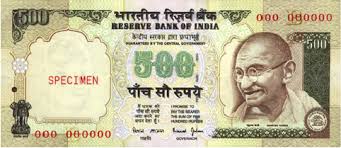India Scraps the 500 and 1,000 Rupee Notes

January 16, 2017
Without any warning, the Indian government advised the Reserve Bank of India to get rid of rid of their 500- and 1,000-rupee banknotes two months ago. Done in order to curb the rampant economic corruption in the country, 500 and 1,000 rupee notes make up nearly four fifths of all the paper currency in India.
India’s Prime Minister, Narendra Modi, declared on November 8, 2016, that the use of 500 and 1,000 rupee notes would be invalid after midnight that day. He said that new 500 and 2,000 rupee notes would be issued the following week.
The Reserve Bank of India, or RBI, wrote a seven-page letter to Parliament’s Department-Related Committee of Finance , and stated that on November 7, 2016 the government had “advised the Reserve Bank that to mitigate the triple problems of counterfeiting, terrorist financing and black money, the Central Board of the Reserve Bank may consider withdrawal of the of the legal tender status of the notes in high denominations of Rs 500 and Rs 1,000.”
After such drastic measures, chaos sprouted throughout India. Indians were for to rush to the banks to convert their 500 and 1,000 rupee notes to smaller denominations. Getting rid of the 500 and 1,000 rupee notes in India is roughly equivalent to getting rid of $5 and $10 bills in the United States.
Getting rid of these rupees also resulted in Indian banks running out of rupees. There are still long lines of people waiting outside of the banks for money. The supply of the new currency has lagged behind demand. In fact, the exchange of the 500 and 1,000 rupee notes rose so high that the Indian government stopped over-the-counter exchanges of the notes altogether and instead forced everyone to put their money into banks.
Sophomore Tia Washah said, “If the United States did something like that, I don’t know what everyone would do. The country would be in hysteria.”





